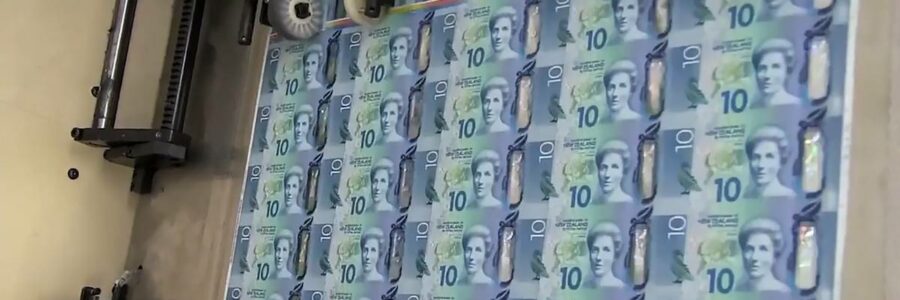
NZ swap rates up, Kiwi dollar falls after Fed move
New Zealand wholesale interest rates bumped up and the Kiwi dollar dropped by almost a US cent after the Federal Reserve signalled that it expected to start raising interest rates in 2023, driven by faster growth and higher inflation.
At the end of its two-day policy meeting, the US central bank kept its main interest rate on hold at zero to 0.25 per cent, where it has been since the start of the Covid-19 pandemic.
But the Fed’s broader stance differed from the approach taken in March, when officials predicted that current rates would be maintained until at least 2024.
“It’s an important shift,” Imre Speizer, Westpac senior markets strategist said.
“It has certainly surprised the market and this one probably has legs,” he said.
“Clearly, more members of the Federal Open Market Committee (FOMC) are thinking that they can see a rough timeline over the next few years of having to normalise their policy settings,” he said.
“More importantly, the tapering talk has started,” he said.
At a news conference, Fed chair Jay Powell was at least prepared to talk about the process of winding back the Fed’s US$120 billion a month quantitative easing programme, otherwise known as tapering.
“It (tapering) seems to be on the table now and I think the markets are going to be wondering: when does that tapering talk start to intensify?” Speizer said.
Post Fed, the benchmark US 10-year Treasury yield gained 10-basis points to 1.58 per cent and world bond markets responded in kind.
The New Zealand US 10 year bond swap rate lifted by 10 basis points to 1.93 per cent and news of a stronger than expected 1.6 per cent gain in GDP added a further four basis points across the swaps curve.
The US dollar rallied, driving the NZ dollar down by almost one US cent to US70.50cfrom US$71.40, then staged a rally in the aftermath of strong domestic GDP data.
By early afternoon, the currency was at just under US71c.
At a news conference, Fed chair Jay Powell struck an optimistic tone about the pace of job creation in the US.
“There’s every reason to think that we’ll be in a labour market with very attractive numbers, with low unemployment, high participation and rising wages across the spectrum,” Powell said.
The FOMC kept its asset purchases steady at US$120 billion a month.
Powell will be eager to avoid the so called 2013 “taper tantrum” – when US Treasury yields spiked when investors learned that the Fedwas slowly putting the brakes on its QE programme.
At a news conference, Powell said the process of winding down the asset purchase programme would be “orderly, methodical and transparent”.
Analysts saw the Fed’s messaging today as in some ways similar to the Reserve Bank’s monetary policy statement in May.
At the time, the central bank kept its official cash rate unchanged at 0.25 per cent, but implied in its forecasts that rate rates would start in the second half of next year.
“It’s not too different from what we saw from the Reserve Bank,” Hamish Pepper, fixed income and currency strategist at Harbour Asset Management, said.
“Clearly, there is this increase in confidence within the Fed and you can see that in terms of their forecasts,” Pepper said.
The Fed’s “dot plot” forecasts show two rate hikes in 2023 when previously there had been none.
“The connection with the rest of the world means that it will be difficult for central banks to meaningfully move ahead of the Fed,” he said.
Pepper said the Reserve Bank’s next moves were more about size rather than timing.
The bank’s official cash rate sits at a record low of 0.25 per cent.
“We don’t really have an issue with the timing of lift-off for the Reserve Bank,” he said.
“It’s been more about the magnitude – we felt that it could be a larger tightening cycle than the markets are pricing.”
Early last year, New Zealand’s quantitative easing programme started with $1.8 billion a week of bond buying.
Now its back to just over $200m a week.
“There has been a huge amount of tapering that we have gone through, and now there is potential for rate hikes less than a year away,” Pepper said.
He said what New Zealand is going through now could play out in a similar way for the Fed, only over a longer timeframe.
Source: Read Full Article
/cloudfront-ap-southeast-2.images.arcpublishing.com/nzme/XKYQZ77VUAX4BURPTKAKORUAV4.jpg)